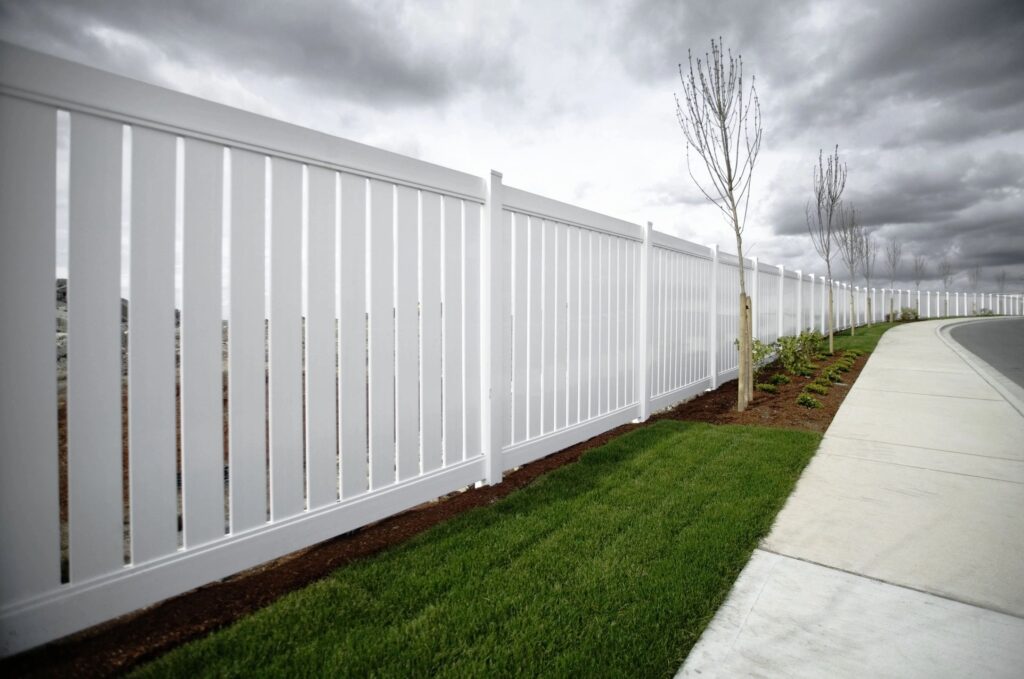You must keep your fencing in good shape, whether you are a landlord or a property owner. A well-kept fence can not only guarantee your home’s safety and privacy. But it can also improve your curb appeal and entice renters and purchasers. Your fence’s durability and lifespan are ensured by routine painting. We’ll go over the fundamentals of preparing and painting fences in this article. As well as some helpful tips on How to paint a fence if you want to handle this project yourself.
Let’s start now without further ado!
Examine the weather
A day should be set out to paint fences, but first, you need to make sure the weather is suitable. Therefore, before scheduling a day for painting, we advise checking the forecast at least 24 hours in advance. No matter what material your fence is constructed of, you should pick a warm, dry day that is around 20°c with low to moderate humidity to achieve optimal results.
The best times to paint fences are in the early to mid-summer and spring months when humidity levels are lower and you can prevent extra wetness. Your paint will also dry swiftly and uniformly. However, be careful not to begin painting the fence when it is 30°C or higher because too much heat and UV light might cause the paint to dry too rapidly and flake.
Carefully prepare your work area.
You’ve chosen the ideal day, so it’s time to get ready. You must properly prepare and prime the surface to be painted before even cracking open your paint tin.
First, we need to make sure the surface is clean. To do this, clear the area surrounding the fence’s base of any dirt, cobwebs, or old nails or screws that are protruding from the panels. Depending on the material, you should give the fence a thorough cleaning next. To completely remove all mildew and mold from the surface of common fencing materials like aluminum, PVC, wrought iron, or composite fence/split rail fences, power washing with water and bleach solution is usually necessary.
When repainting a wooden fence, make sure the timber is still sound and free of termite infestation and water damage. Sand the broken or peeling areas to create an equal surface after brushing off any dirt.
Make use of the required equipment and devices
Depending on the type of fencing material you’re using, you’ll need different implements and tools to finish the job. The use of sprayers and power painters is advised for fencing materials like aluminum or wrought iron to provide an even dispersion. These power painters come in cordless models and are well-liked by professional painters for their effective use in busy painting projects.
Employ the proper safety equipment, such as a mask, gloves, and adequate protective drop sheets, if you elect to use power painters or sprayers.
Use a roller and paint brushes to finish painting wood or vinyl fence panels. We advise using a large 4-inch brush for coverage and a small 2-inch brush for trimming the edges and corners when using only paint brushes. Remember to use drop sheets and gloves to protect the surrounding area.
Select the appropriate paint or stain.
Painting and staining are the two methods that can be used to color wood or vinyl fencing panels. The traditional and less expensive method is to paint the fence; however, this method requires more maintenance to maintain its beauty. We advise using oil-based paint because of its endurance if you decide to paint your wooden fences. While we advise using automotive epoxy or enamel paints for metal fences.
The results of staining your fences will remain longer and stick to the surface better than painting, despite the process being quite expensive. Additionally, unlike the painting process, staining does not call for additional preparations.
Coat surfaces with primer.
All year long, your fencing must survive climatic and environmental fluctuations. One of the reasons fences are more prone to corrosion and mold is because of these tough conditions. It’s also the reason why painting the fencing surface with only one paint coat never suffices. Instead, we always advise using a high-performance primer.
The fencing panels will create a thick, protective layer, enabling easier paint application, by using either a plastic or metal primer on the surface. Even old stains can be covered up using paint primers, resulting in an even finish.
To provide protection, you might need to apply several coats of primer to aged fences. Make sure the primer you buy is a high-performance undercoat that improves the adhesion and longevity of the topcoat.
Adhere to the proper fence painting procedures.
Ensure that everyone is informed beforehand and is aware of the task at hand, whether you want to DIY or hire a professional residential painter. It is crucial to understand how your fencing material will affect your paintwork.
As we previously explained, you can DIY your wooden fencing panels by using either a brush or a roller. To avoid drips and extra paint around the edges, move the instrument when applying paint in the direction of the wood grain.
For the best coverage, we advise a sprayer for metal fencing panels. A bristle brush could be useful for detailing small fences or fences with intricate designs. If you choose to paint with a brush, be sure to move in a single direction to prevent dripping. If utilizing a sprayer, carry out the same procedure while spraying downwind.
Final judgment
You may remodel your fence and give your exterior a fresh look by following these easy procedures. Our group of home painters and contractors in Canberra are ready to help with the full fence panel painting procedure. Contact us right away if you live in Canberra or a nearby neighborhood and have questions or need assistance with home painting.



